Staircase lighting ideas: 14 statement ways to illuminate your stairs
Try these staircase lighting ideas to brighten up your space while creating a focal feature of your staircase
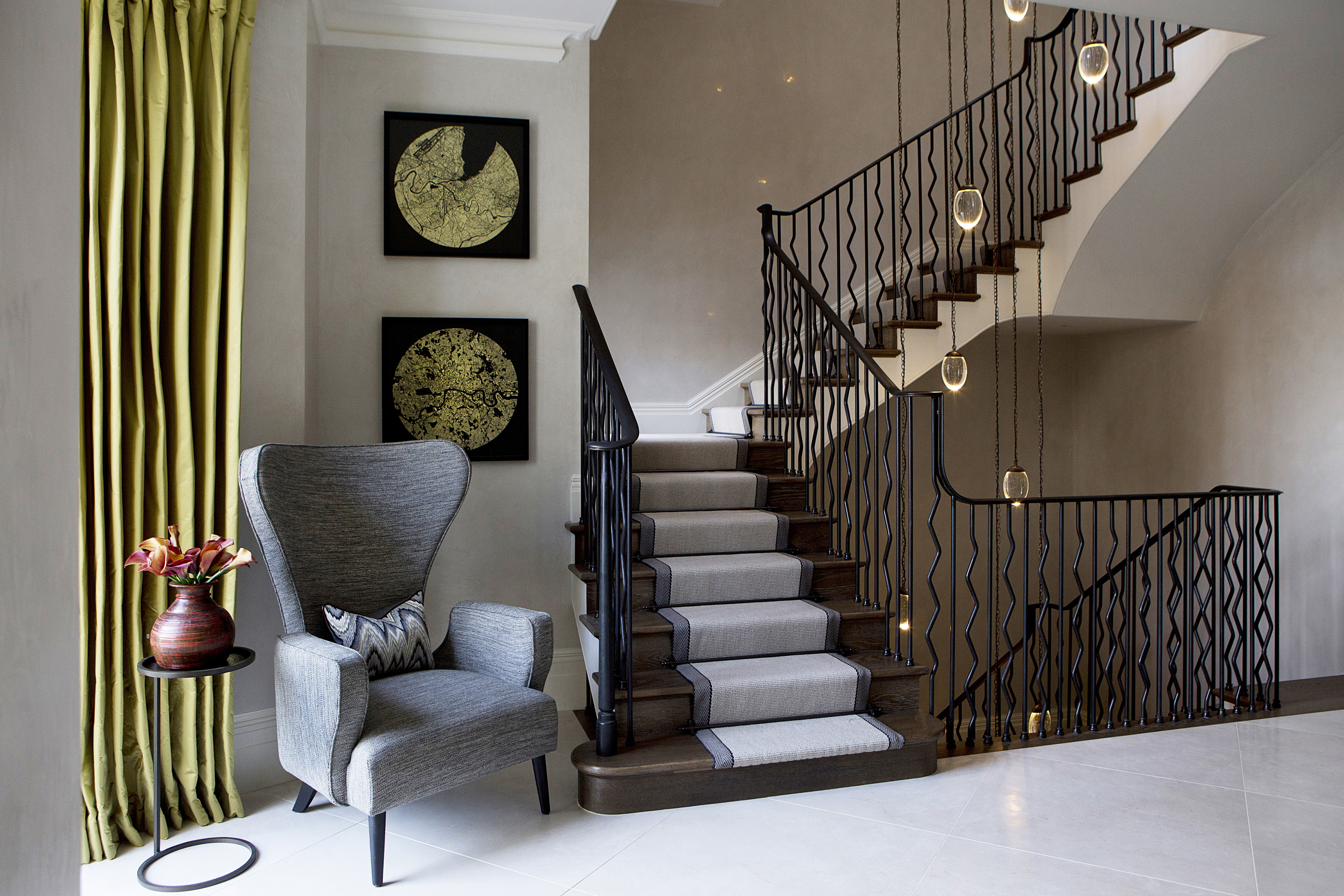
Staircase lighting ideas are a little bit different than the lighting schemes you use in other spaces in your home. Not only does your staircase lighting need to be sufficient that everyone in your home can use the stairs safely, but it’s arranged on a gradient in what’s potentially the most narrow spot in your home — meaning many lighting ideas just won’t work in the space.
This does, however, open your staircase up to a different world of lighting design. From dramatic drop pendants to modern strip lighting, your staircase offers a real opportunity to get clever with your lighting design.
Take a look at these 9 statement staircase lighting ideas as inspiration for novel ways to illuminate your stairs. Some of these schemes depend on specific configurations of your staircase design, but if you're working on a self build or renovation project, it's worth considering your lighting at an early stage. That way you can create a real statement design for an amazing first impression in the entrance to your home.
Staircase Lighting Ideas
1.Use overhead spotlights to light your way
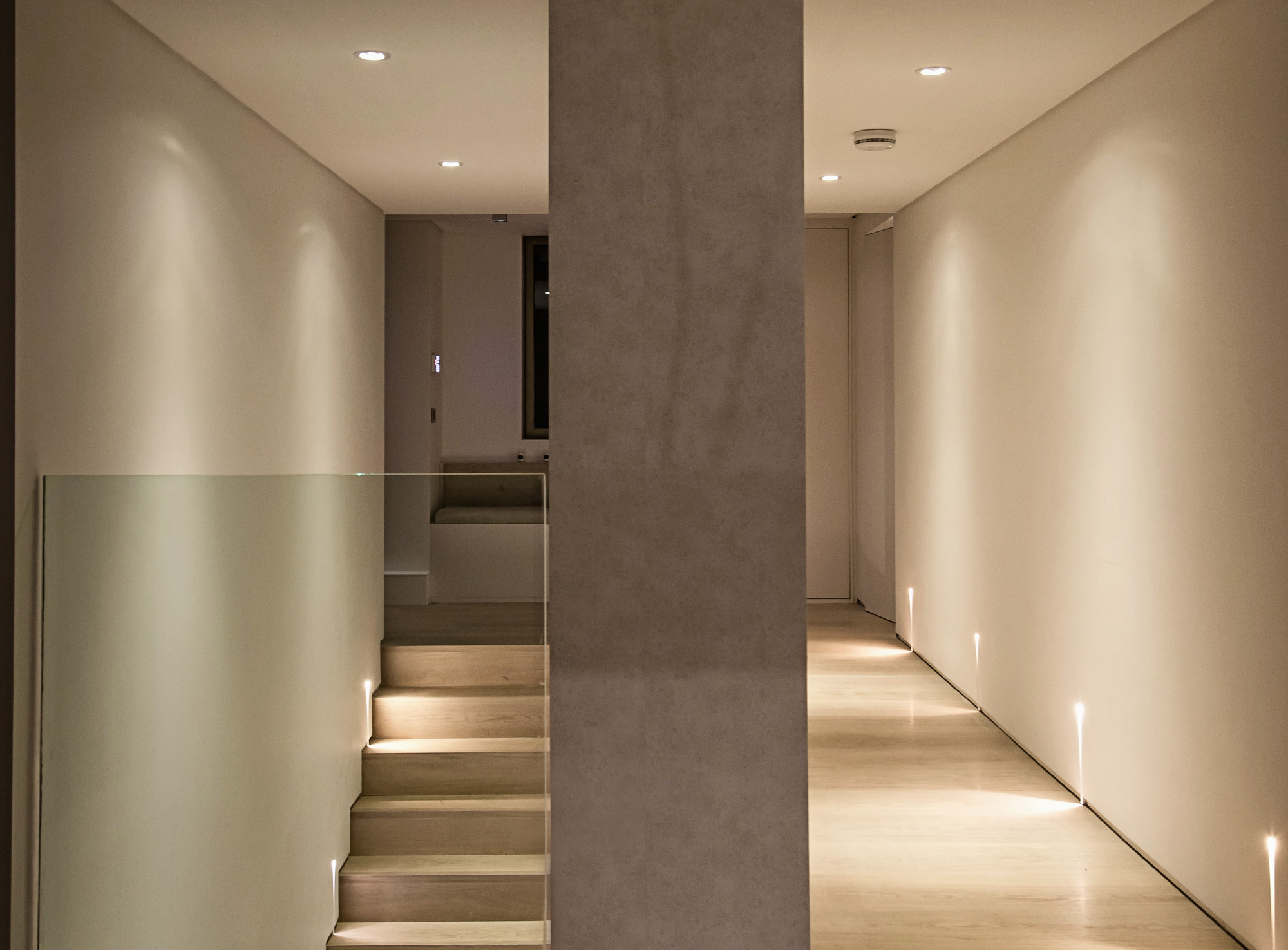
Overhead spotlights, with their focused and directed beams, serve as a smart choice for illuminating your staircase. By lighting the entire stairway, overhead spotlights guide you effortlessly up or down the staircase, minimising the risk of accidents in poorly lit areas. Additionally, these spotlights are versatile and adaptable. Whether you have a modern staircase or a more traditional wooden staircase design, overhead spotlights can be tailored to suit your specific style of home.
2. Suspend a statement light over a stairwell
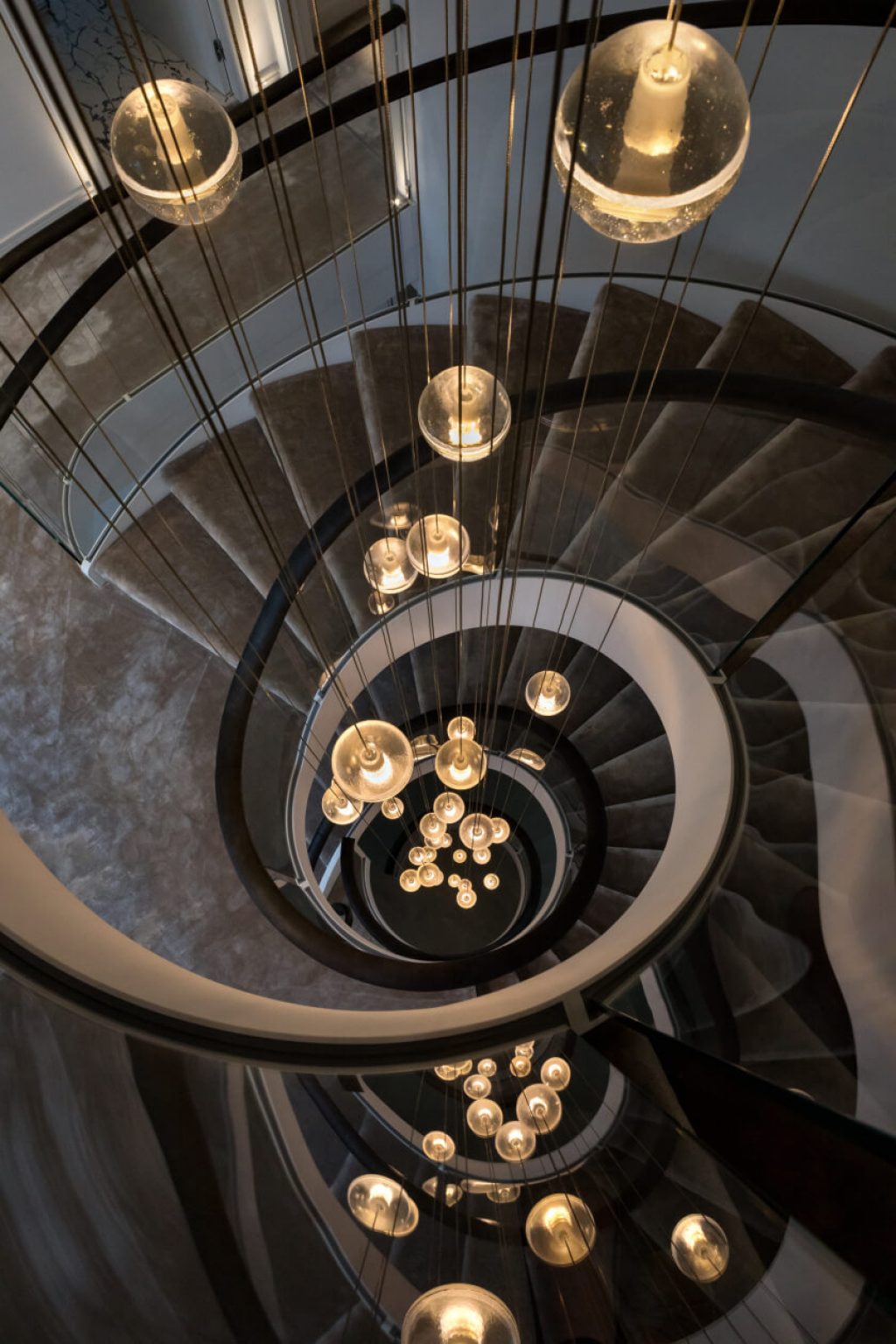
Designing a staircase around a central volume to act as a lightwell across several storeys is a great way to create a dramatic statement. Chandeliers formed of multiple dropped pendants are the perfect solution, as you can stagger the pendants so that each storey gets sufficient light, while keeping the whole lighting configuration as cohesive as possible.
While this sort of design can work over two storeys, it reaches its full potential in a home design with three or more. The impressive four storey chandelier above designed by Brilliant Lighting in collaboration with Bisca bespoke staircases, as the centrepiece of a feature spiral staircase. The strong verticals work really well with the sinuous spiral.
3. Hang a pendant fixture alongside your staircase
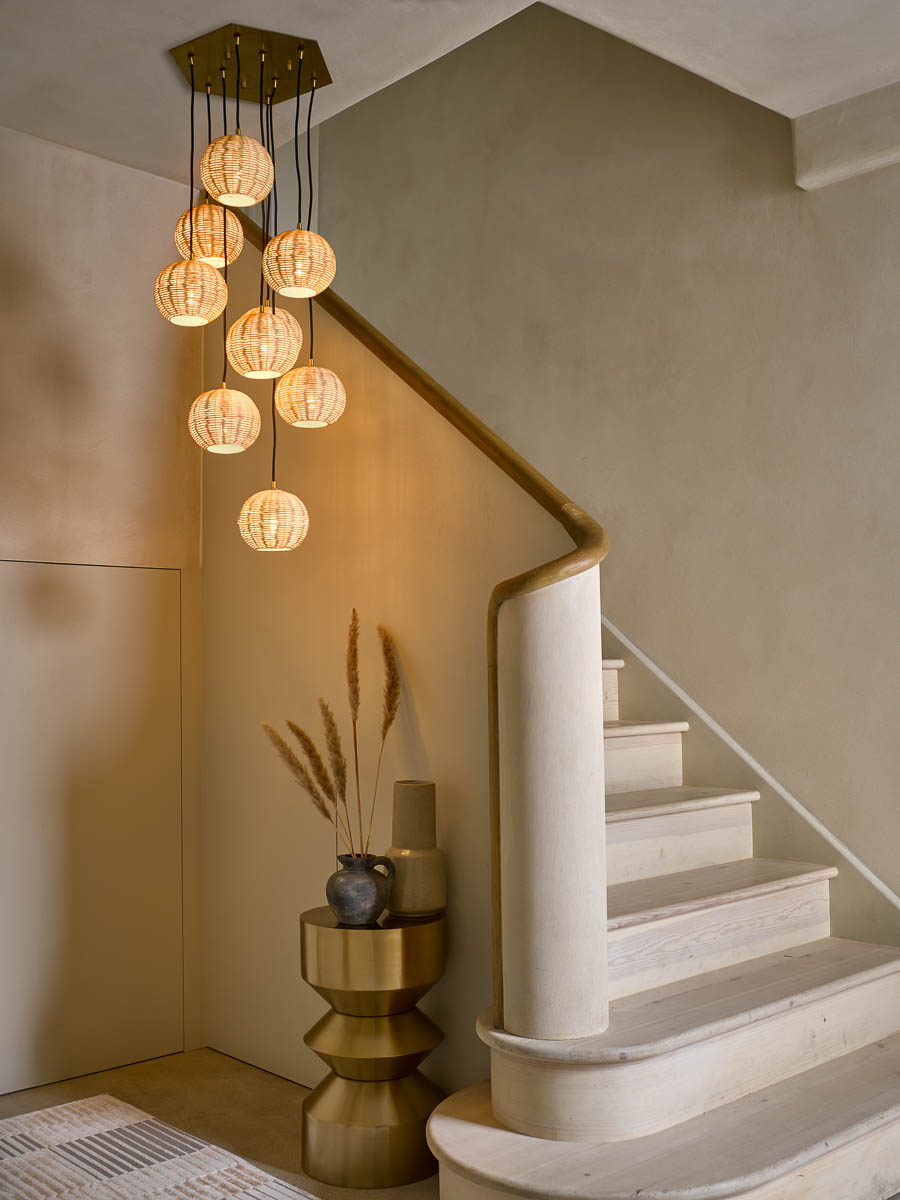
If your home doesn't have space for a dramatic chandelier then a similar effect can be achieved by hanging a smaller statement pendant light alongside your staircase in an adjoining hallway or landing space.
Bring your dream home to life with expert advice, how to guides and design inspiration. Sign up for our newsletter and get two free tickets to a Homebuilding & Renovating Show near you.
As with all forms of hallway lighting, you should make sure you have enough space to walk beneath the light fixture freely - you don't want to be bumping your head on a chandelier every time you go to open your under stairs cupboard!
The solaris brass and rattan chandelier by Pooky Lighting (pictured above) is just the right size to make a statement and light up a space without inhibiting movement.
4. Illuminate staircase treads with wall mounted spotlights
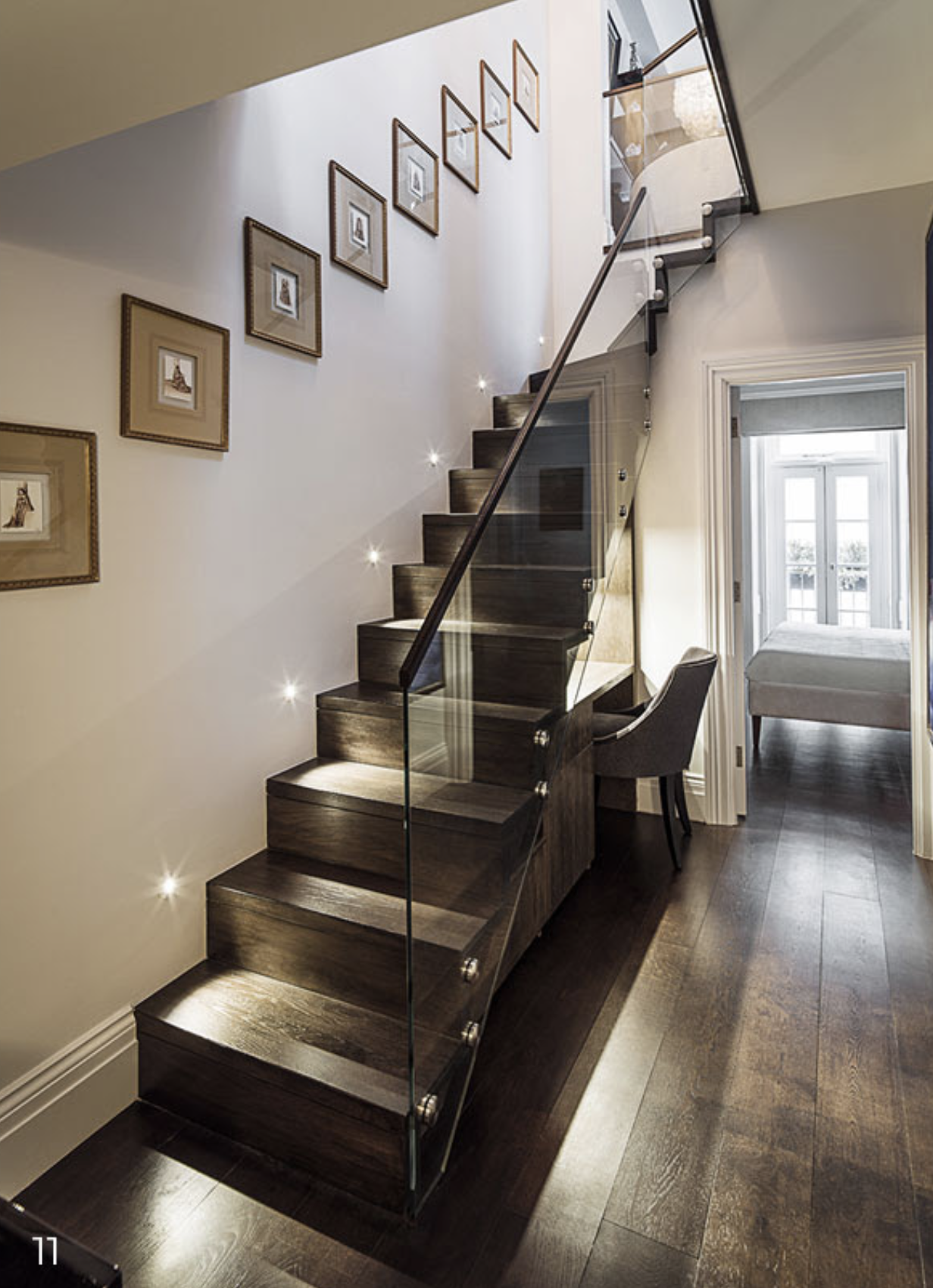
"Introducing step lights can bring a sense of direction and guide the eye," says Piero De Marchis, Director of Detail Lighting. “Low level lighting can also act as safety night lights for family and guests, as well as set a calming mood".
According to Piero, in-ground lights should be positioned 50mm – 150mm from the wall depending on the product size and the ceiling height. "Alternatively, floor lighting can be used for orientation purposes – indicating steps and changes of floor surface are the most common uses in the home, for example on steps on a staircase. For this purpose, the floor lights should be kept to the edge as much as possible and be low brightness to reduce glare.”

Piero De Marchis is the director of Detail Lighting, a lighting design company focussed on integrated architectural lighting design. Piero knows a thing or two about creating the right ambience in an interior space. Alongside his team of lighting experts, Piero collaborates with architects, interior designers and specifiers to ensure that lighting designs fulfil a purpose and solve a problem for clients.
5. Use a cluster of pendant lights over a staircase
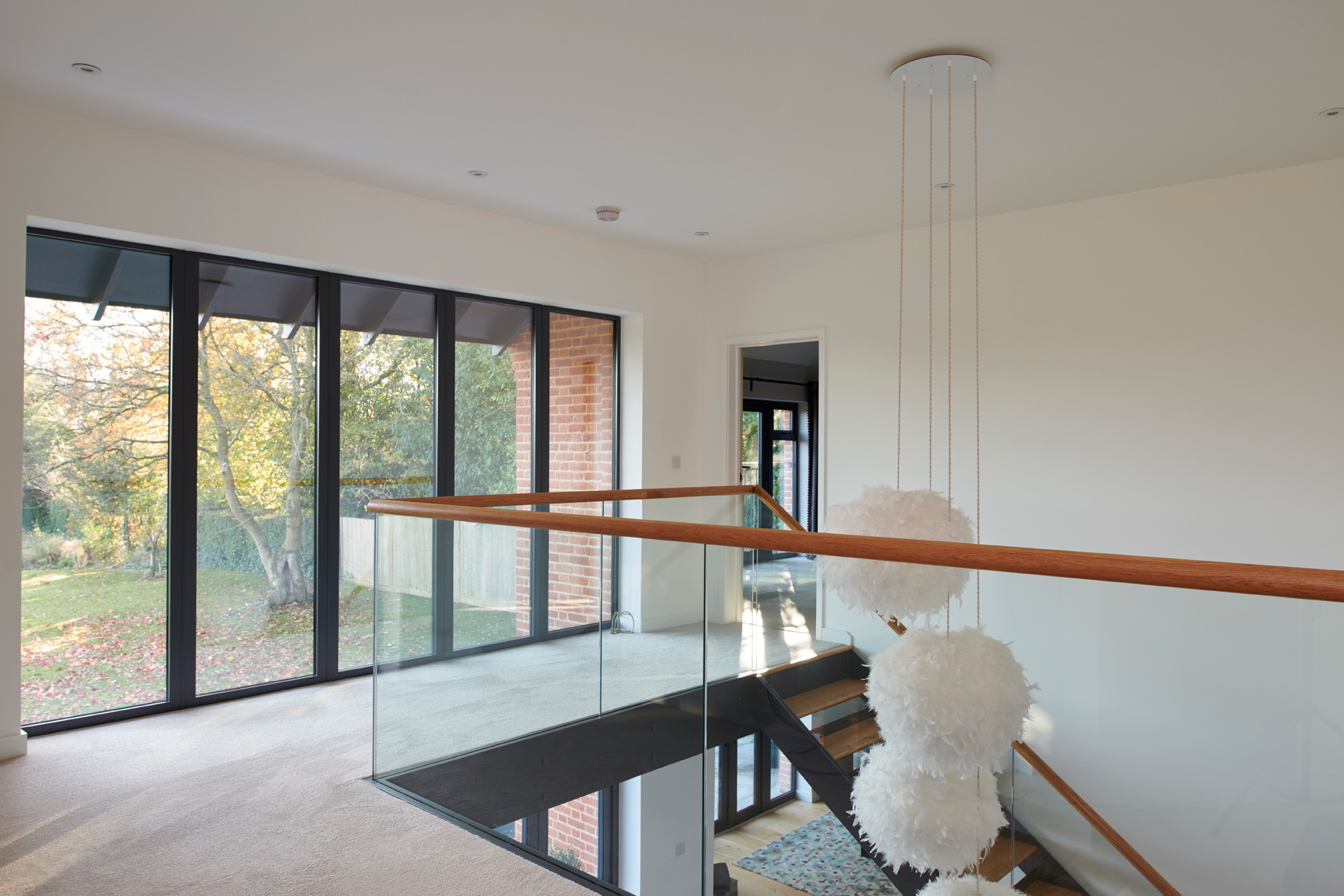
A cluster of pendant lights isn’t only a clever lighting solution for light wells — they work wonders for all kinds of staircase set-ups as they take into account the change from one floor to another, ensuring both benefit from the light of the pendants. Choose a lighting design that allows you to customise the drop of the pendant, and make sure it has enough cable to reach your desired height from the floor before you buy.
6. Light up your floating stairs
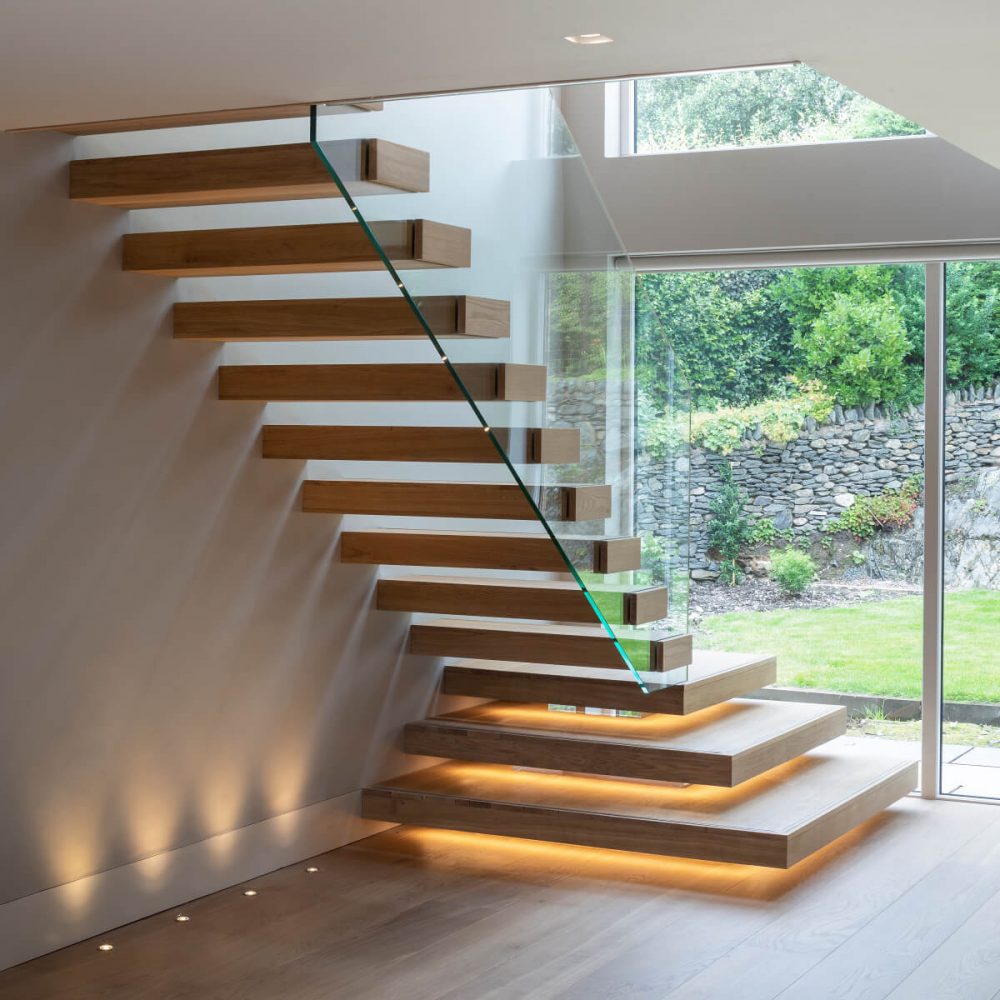
Floating staircases are a design statement in and of themselves, but combine that with under stair lighting and you’ve got a design with wow-factor on your hands. This style of lighting can be designed into your staircase at the time of installation by a professional lighting designer, or on a DIY basis using easy to fix LED strips.
Directional downlights on stair treads is a great way to add atmospheric lighting to a staircase while keeping it a functional space to use. However, keep in mind that the lighting may be visible from below, so make sure it’s recessed and no wires are left exposed for a safe and sleek finish to your staircase lighting.
7. Stagger wall lights down your stairway
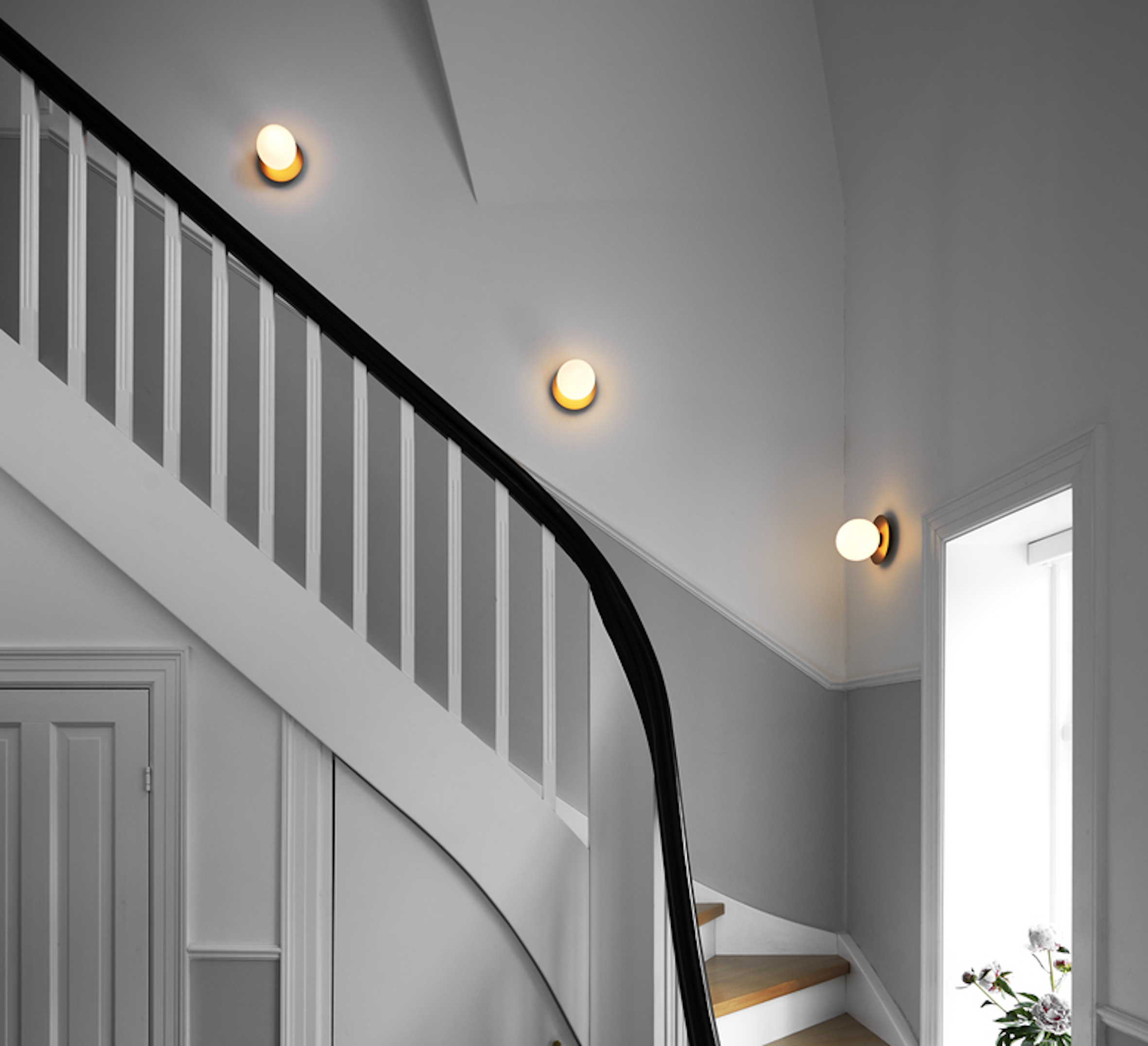
By strategically staggering wall lights along the path of your staircase you can create a visually dynamic effect that adds depth, texture, and a touch of drama to your stairwell. A staggered placement of wall lights can accentuate the architectural features of your staircase, highlighting its unique design elements. Whether your staircase is wide and open or narrow and enclosed, staggered wall lights can be adapted to suit your space and style.
8. Light the underside of your steps
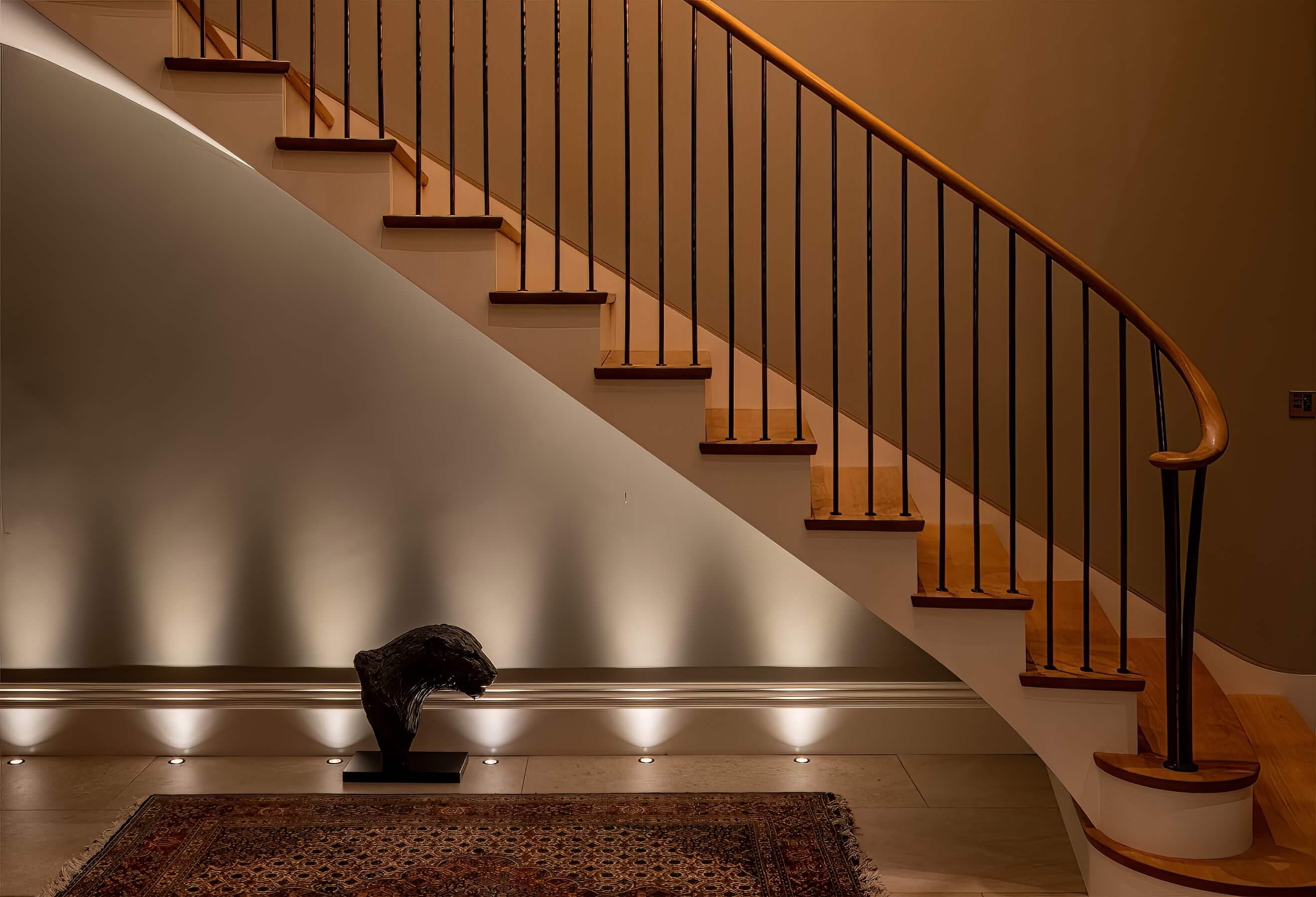
"Under stairs lighting can add a new dimension to a space as well bringing light and drama to an otherwise dead area," explains Iain Shaw, Director of Brilliant Lighting (UK). "The stairs are the ‘spine’ of this house, connecting two main areas together. In the staircase above, the massive oak balustrades have been offset with a line of light on the underside of the stairs".

Iain is a founder and director at Brilliant Lighting. Based in North Yorkshire, Brilliant delivers inspirational lighting designs for a variety of clients across the UK and Europe. In his role at Brilliant, Iain is responsible for marketing, communications and technology.
9. Use flush wall lights on a narrow staircase
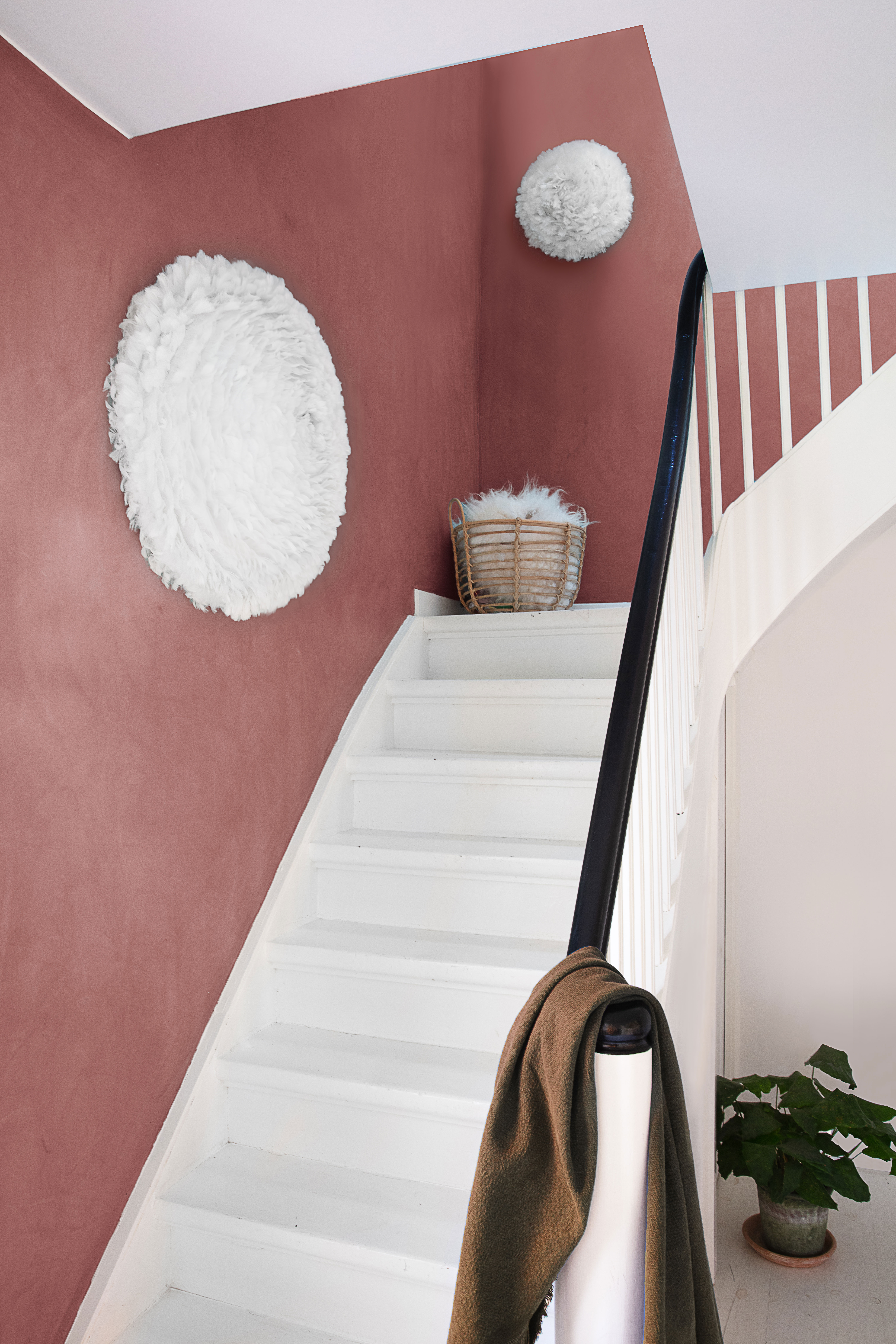
Wall lights can be tricky for a narrow staircase, as you’ll need to find a design that doesn’t impede using the stairs. It may be that a more traditional sconce can be carefully located in an area which means it won’t get in the way, such as a corner in a staircase with a turn, but semi-flush wall lights, like these Umage feather wall lights, are a better idea for keeping the space light and bright without creating an obstacle on the stairs.
10. Change the mood with coloured LED strip lights
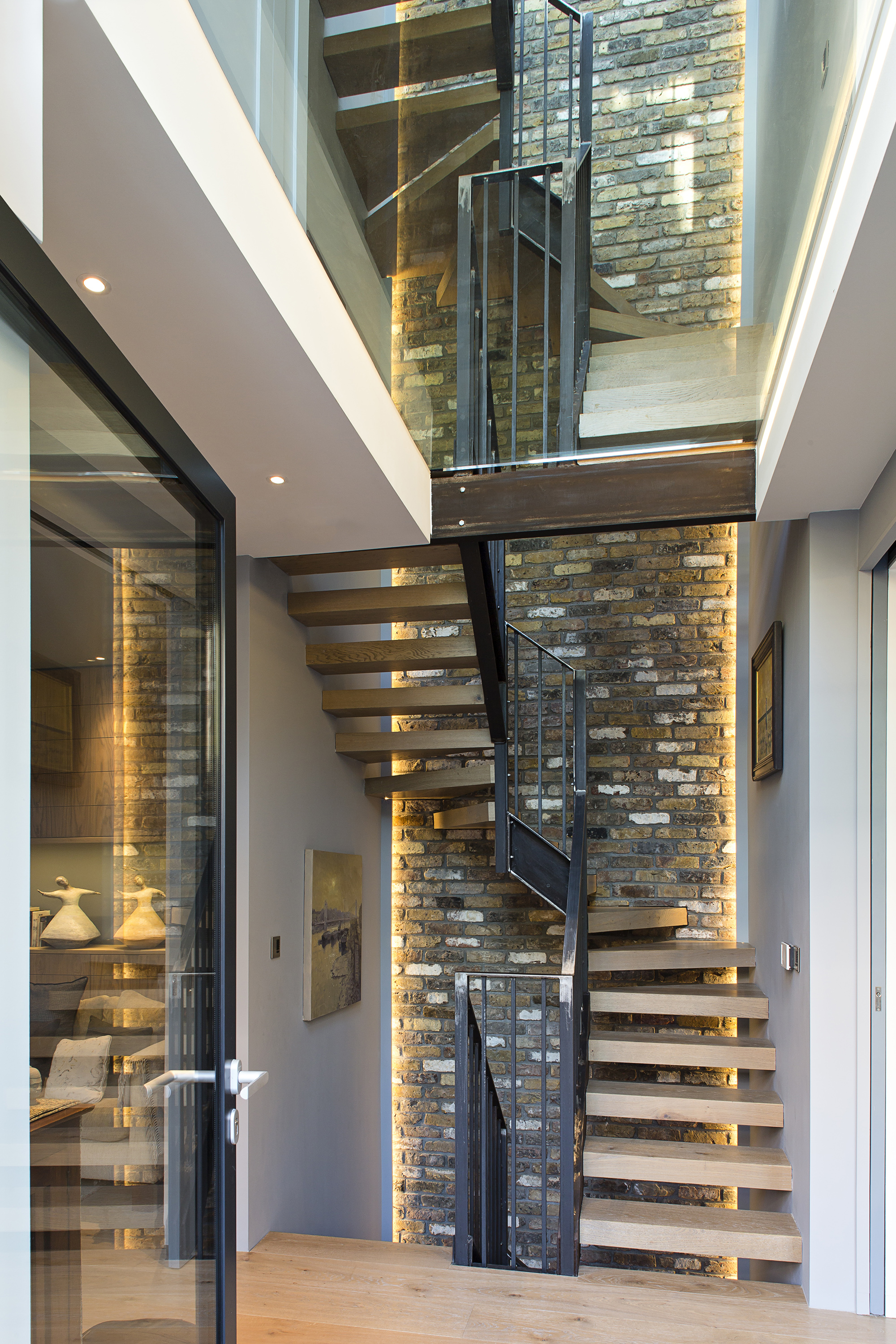
Elevate your living space by experimenting with coloured LED strip lights along your staircase. These versatile lighting options offer a spectrum of colours to instantly transform your room's mood. Whether you desire a warm, cosy atmosphere for a quiet evening or vibrant hues for a lively gathering, these LEDs can be easily customised to your preferences.
Install them discreetly along stair treads or beneath handrails to accentuate architectural features. Energy-efficient and long-lasting, these lights offer a sustainable choice and can even be installed with motion sensors to create unique cascading effects.
LEDs can also be used in the corners of stairways, providing an even light throughout the space as the staircase ascends, while taking up virtually no space.
11. Combine understairs storage with your lighting
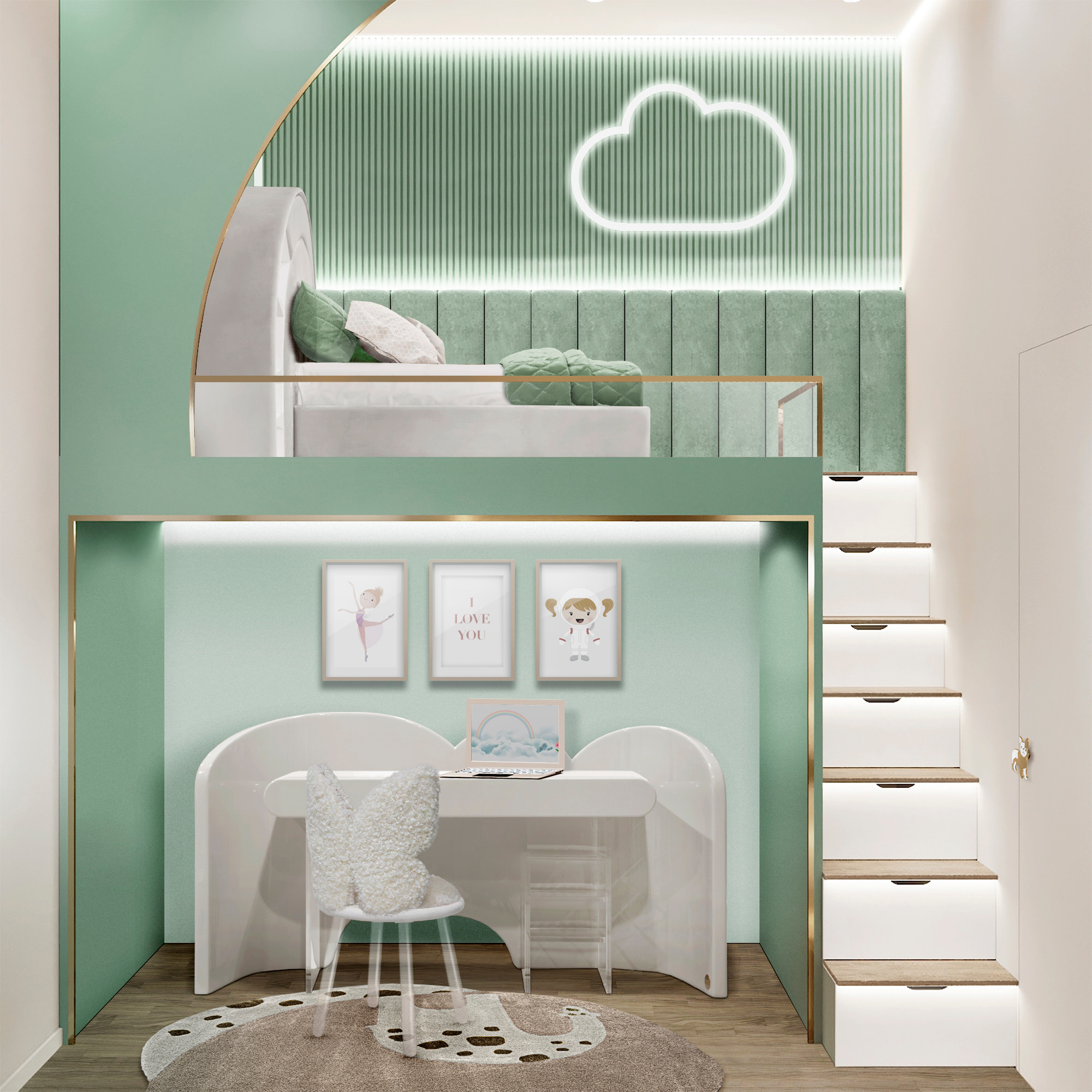
By strategically placing lighting fixtures within your understairs storage spaces, you can ensure that every part of your staircase is well-lit and easy to use. Whether you have under-stair cabinets, shelves, or drawers, the addition of lighting improves visibility, making it simpler to find and organise your belongings. It's a smart design choice that works particularly well in compact spaces, such as in children's rooms or on loft conversion stairs.
11. Add lights under bannisters and railings
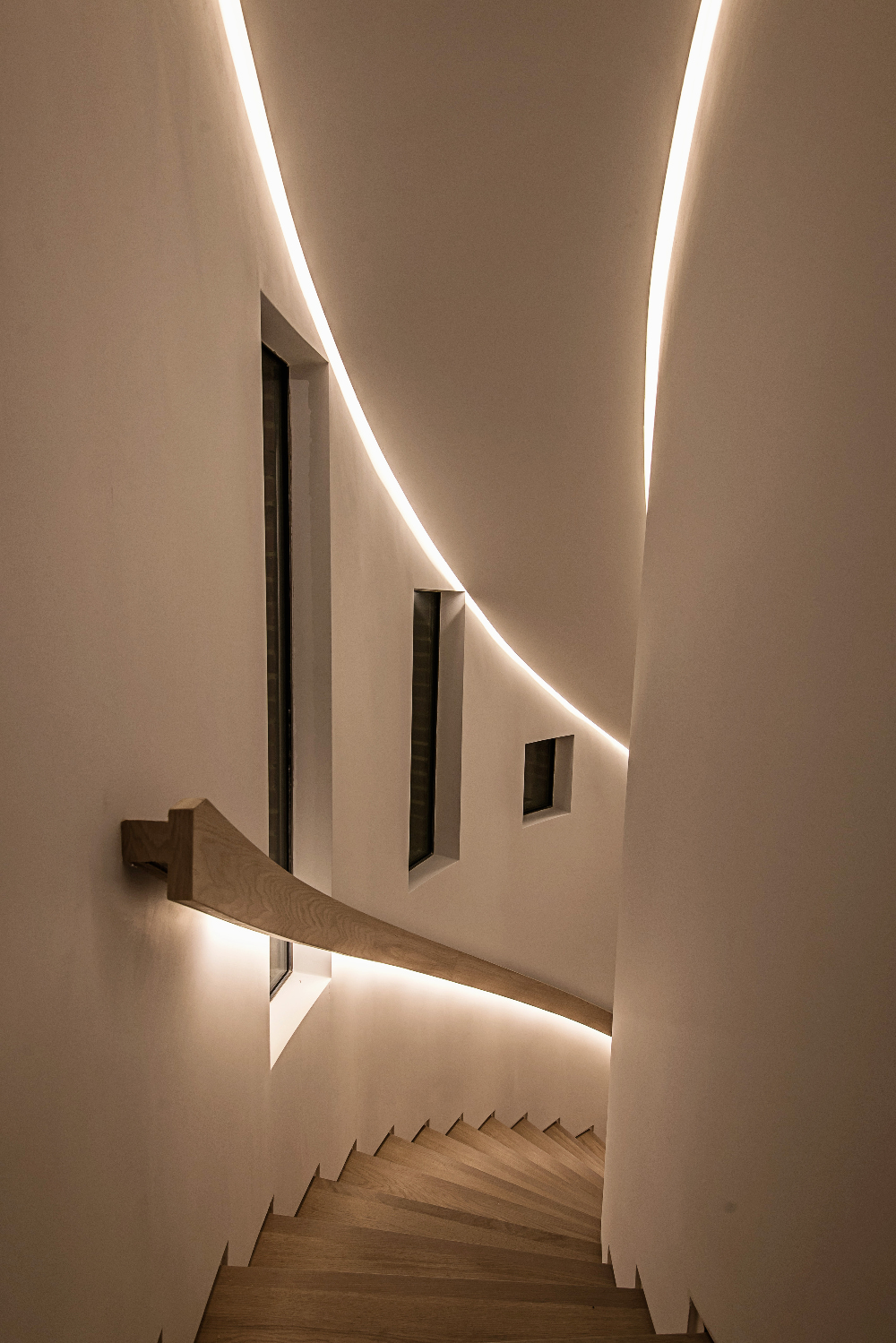
Another clever way to sneak extra lighting into your staircase is with an LED handrail. While these might look like any other hand rail at first glance, they have an integrated LED for use in the evening, casting an ambient glow while also making sure your stairs are safe to use in low-light levels. You could also mimic this approach with your ceiling lights, such as in the example above. This looks particularly effective when installed in a spiral or curved staircase.
12. Embrace traditional wall sconces
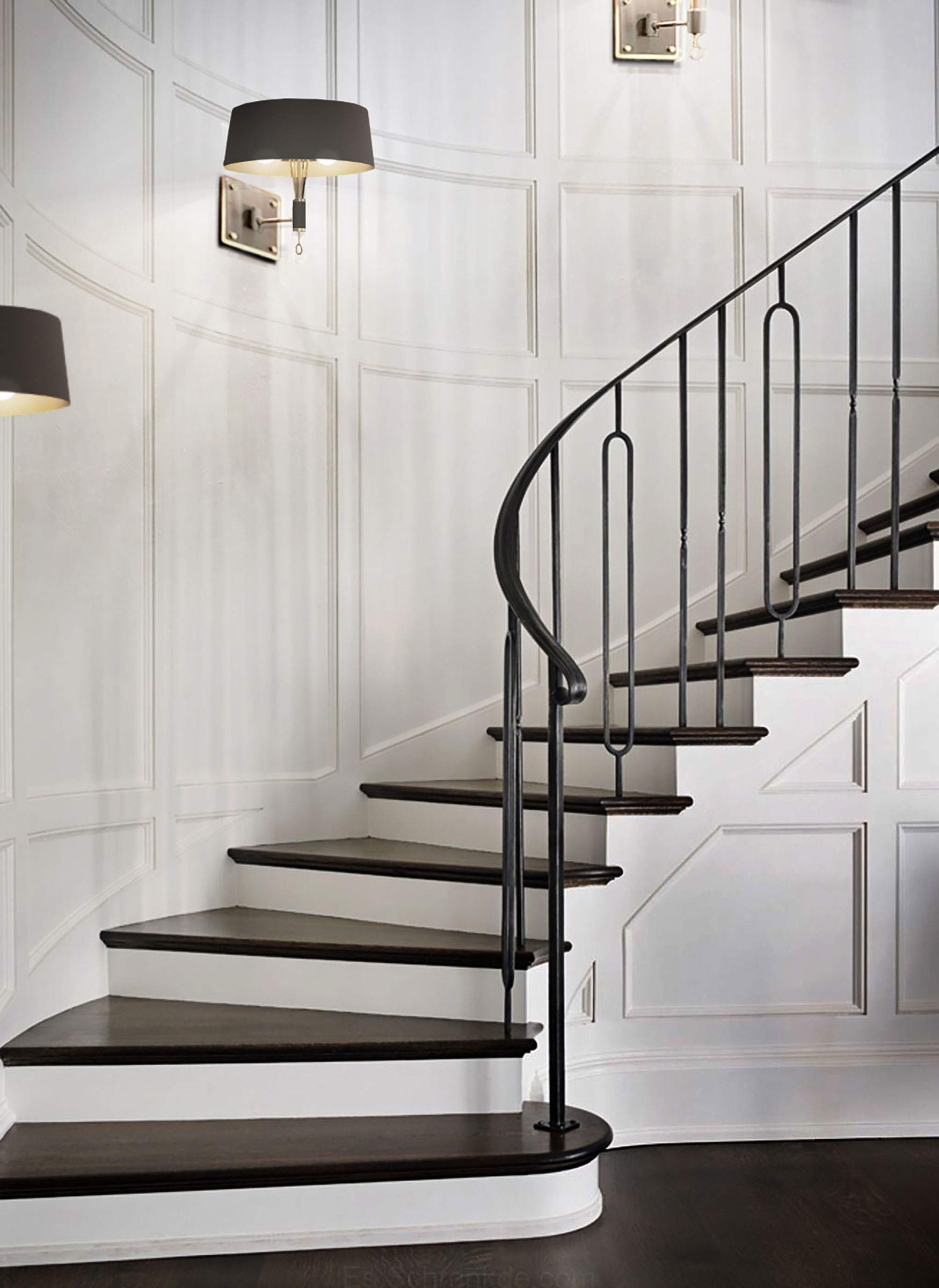
Wall sconces are a timeless choice for staircase lighting, radiating sophistication and charm. These fixtures, often adorned with intricate details, seamlessly blend with classic interiors, lending a touch of opulence. Wall sconces offer soft, flattering illumination that enhances both your staircase's visual appeal and the overall cosy atmosphere of your space. Opt for classic finishes like polished brass or antique bronze, and arrange them in pairs or clusters for added drama.
13. Create a gallery staircase with swing-lights
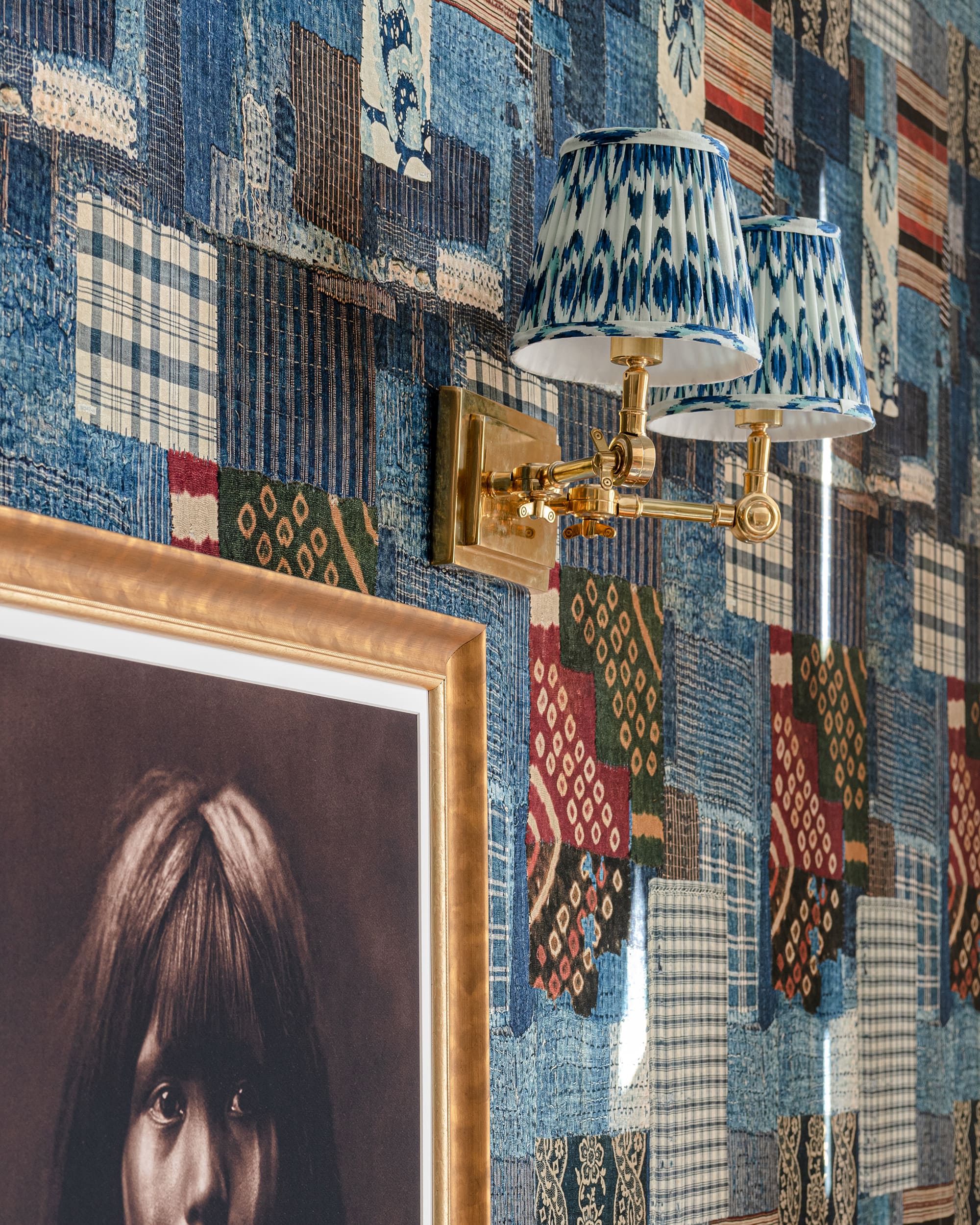
Elevate your stairway walls with the strategic placement of swing lights above paintings and mirrors. These fixtures offer adjustable arms, granting precise control over the light's direction and intensity. They're great for transforming an otherwise plain room into a sophisticated, museum-like space where your artwork takes centre stage.
These versatile fixtures are also ideal for landing lighting as they come in a range of different styles.
14. Consider layered lighting
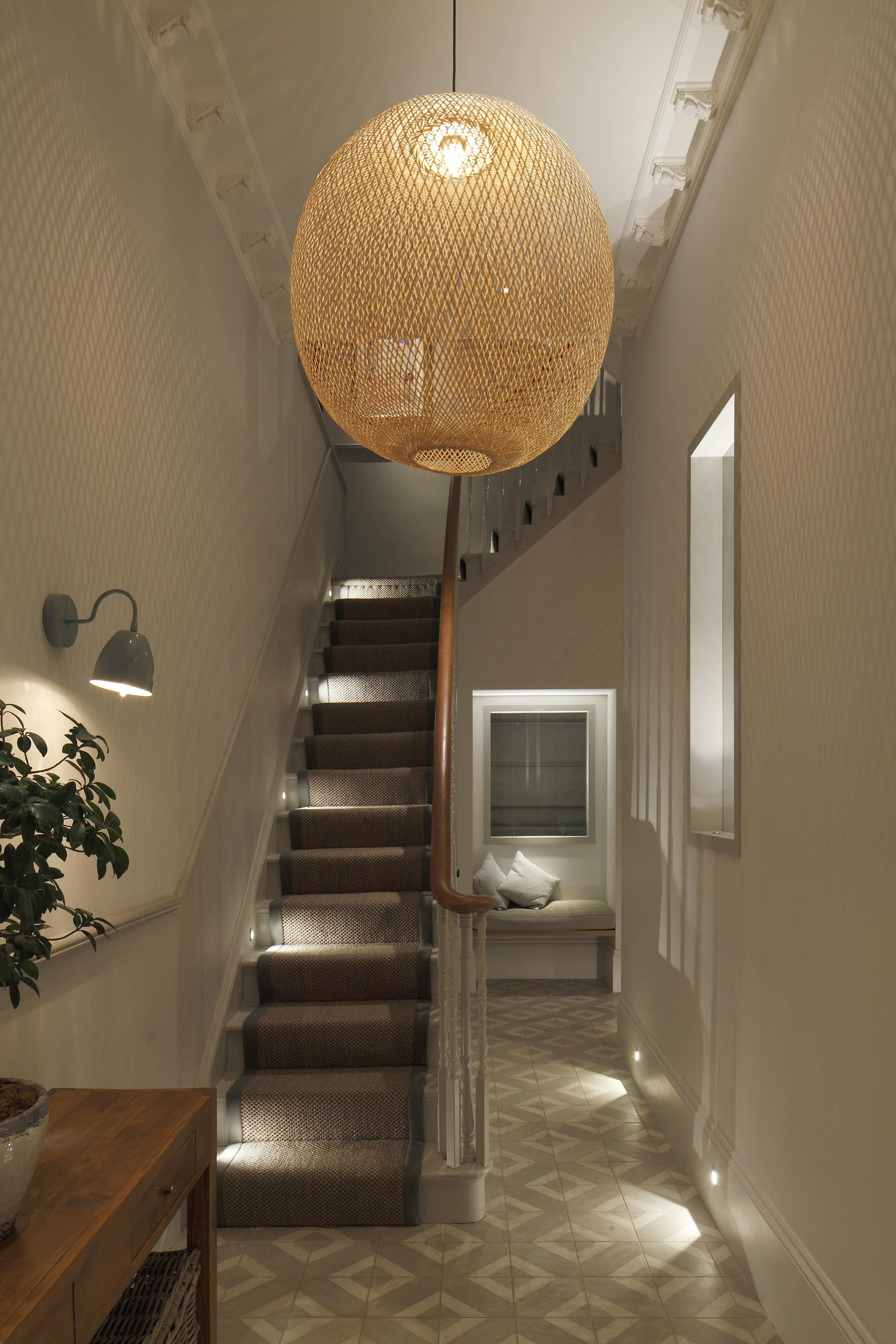
The key to good staircase lighting? Don’t just rely on any one of these ideas. Just like in a living room, think about how many light sources you’ve got in your hallway.
Functional task lighting is a necessity when cleaning and vacuuming the stairs, while low-level ambient lighting is best for setting an atmosphere in the evening, especially in an open-plan space. Aim for at least three light sources around your staircase area.
Staircase Lighting FAQ
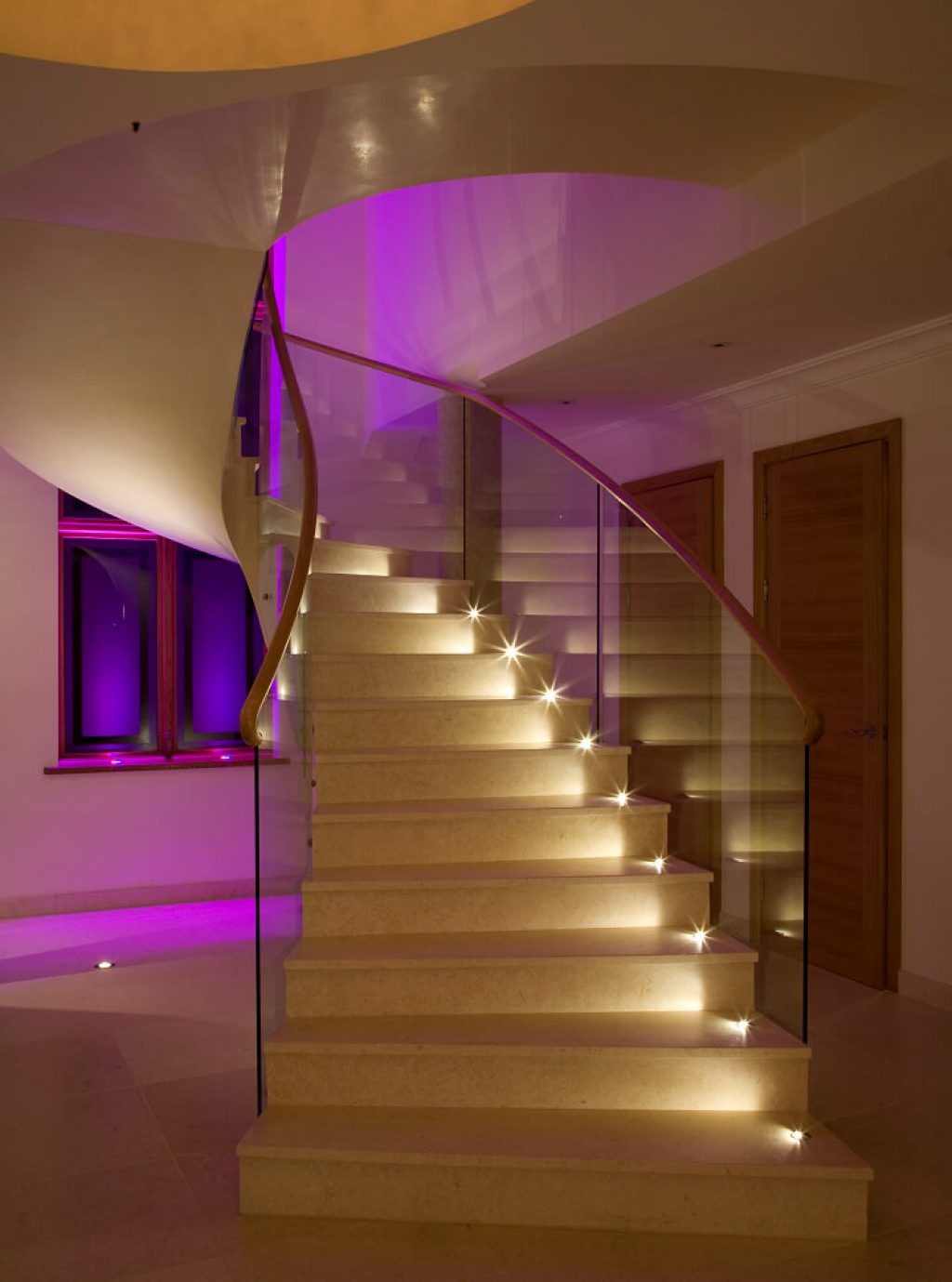
At what stage in your self-build should you consider staircase lighting?
"Planning your staircase lighting at an early stage is essential," explains Iain Shaw, Director of Brilliant Lighting. "Consideration for fixing points is crucial in this process. Whether you choose lighting from above, at tread level, or within the wall or string, it's vital to incorporate staircase lighting into your overall building plans to achieve the desired effect.
For instance, take the eye-catching concrete and marble-clad staircase above, which is illuminated by discreet LED 'mushroom' lights on each tread. Lighting from above would have flattened its elegant curves and presented challenges with the glass balustrade. Here, LD64 accent lights and a ground-recessed Magna fitting were the perfect solutions. They highlight the staircase's sinuous design, creating a stunning visual impact.
It's worth noting that this exceptional lighting nearly didn't come to fruition. The staircase was already cast in place when our clients engaged us. However, thanks to a collaborative effort with the building team and their dedication to core-drilling the structure for fittings and cable access, we successfully achieved this remarkable result. This example underscores the importance of early planning and coordination for a truly impressive staircase lighting design."
How can I light a staircase on a tight budget?
If you're working with a tight budget - or you simply want to light up your stairs for a seasonal period - string lights are an easy and affordable way to brighten your stairs. Wrap a string of fairy lights around the railings for instant warmth.
What are the benefits to installing motion sensors on a staircase?
Sensor-controlled lighting switches on automatically when you approach the stairs, making it an effective way of improving safety. When installing sensors, you should choose a bulb that achieves 100% brightness immediately. Look for the best LED lightbulbs you can find for this purpose.
How do you hide LED strip lights on stairs?
"Customers frequently ask us how LED wiring can be hidden," says Janos Hampel, Director of Stellar Lighting. "As each light and the two motion sensors need to be wired back to the controller. That's a more difficult question to answer, as there are many different types of stairs, different layouts, different preferences depending on budget, and options (e.g. drill and hide the wires in the wall, hide behind skirt board or use cable channels). I always recommend to consult with an electrician on these matters as they are the best positioned to give options.

Janos Hampel is the director of Stellar Lighting, purveyors of high quality and exclusive lighting products. Stellar Lighting specialise in LED strip lights and smart controlled staircase lighting.
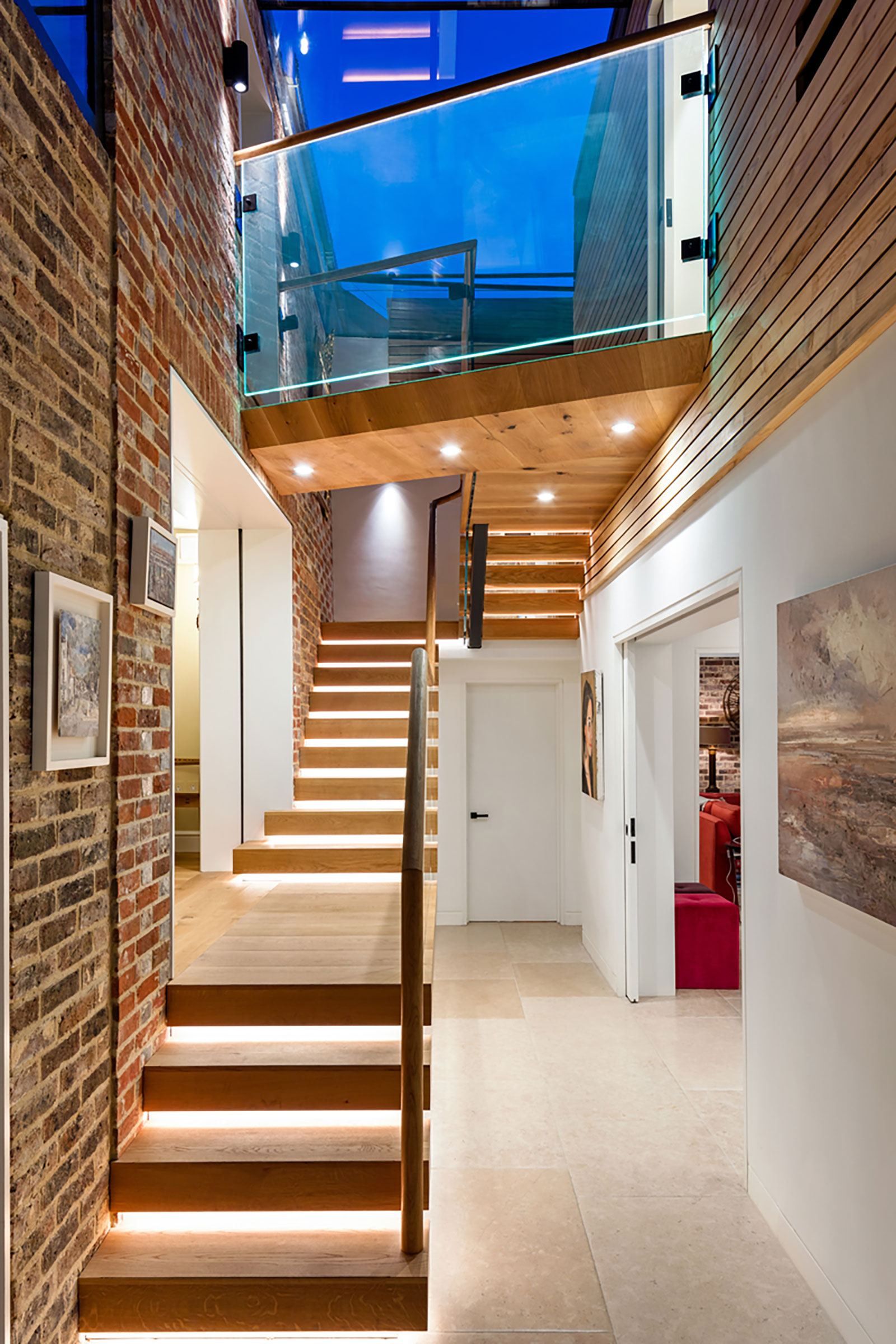
Should I opt for cool or warm lights on my staircase?
The choice between cool light vs warm light for your staircase depends on the atmosphere and ambience you want to create in your home. Cool lights, often in the range of white to bluish tones, offer a modern and crisp feel. They work well in contemporary or minimalist settings, providing a bright and energizing illumination.
On the other hand, warm lights, with their yellow to reddish hues, emit a cozy and inviting glow. They are ideal for creating a comfortable and relaxed atmosphere, making them a popular choice for traditional or rustic interior designs.
"If you use white light, it is important to understand which white colour temperature will look good in your home on your staircase," says Janos from Stellar Lighting. "Not all the white light will fit your home design needs and gives the best results".
Ultimately, it's a matter of personal preference. Consider the overall style of your home and the mood you want to establish. A dimmer switch can further provide flexibility, allowing you to adjust the lighting to suit different occasions.
When combined with smart design choices, such as stair panelling and painted stairs, lighting is the easiest way to transform your staircase and adjoining hallways. Remember to prioritise safety first and then take the time to consider your own lifestyle needs and style before deciding upon specific light fixtures.
Hugh is editor of sister title Livingetc.com and former digital editor of homebuilding.co.uk. He has worked on a range of home, design and property magazines, including Grand Designs, Essential Kitchens, Bathrooms, Bedrooms and Good Homes. Hugh has developed a passion for modern architecture and green homes, and moonlights as an interior designer, having designed and managed projects ranging from single rooms to whole house renovations and large extensions. He's currently renovating his own Victorian terrace in Essex, DIYing as much of the work as possible. He's recently finished his kitchen renovation, which involved knocking through walls, and landscaping a courtyard garden, and is currently working on a bathroom renovation.
- Gabriella DysonInteriors journalist and contributing editor

